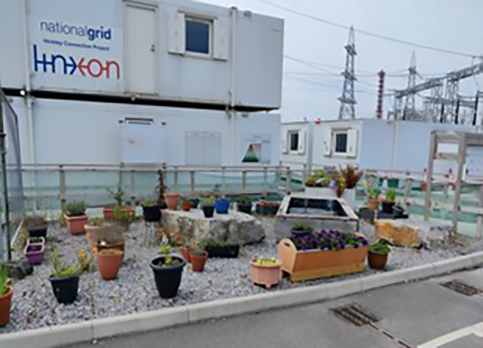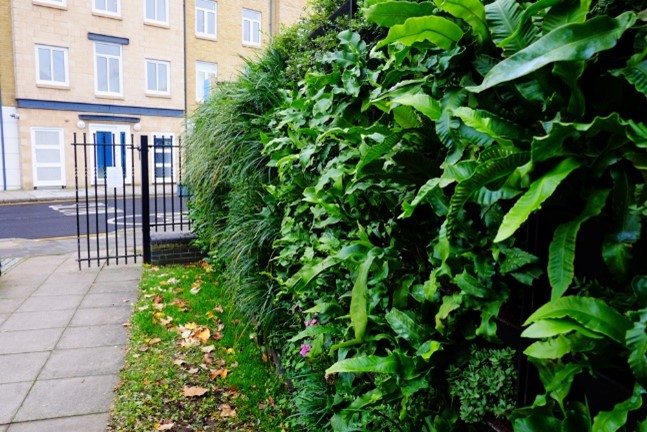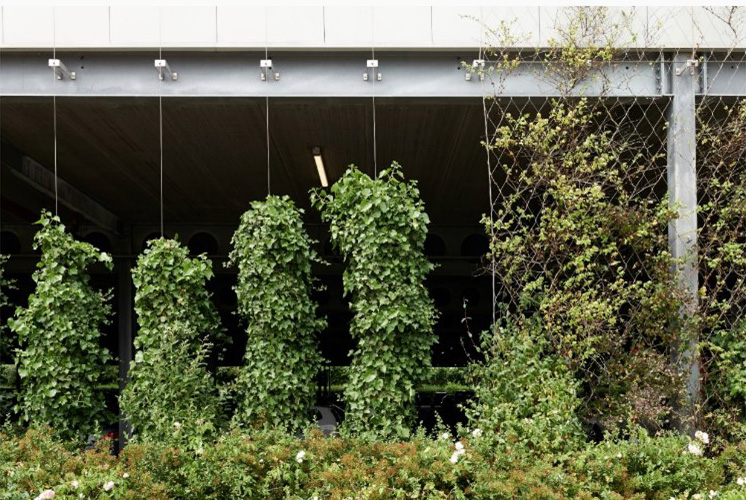Project highlights
Greener transport is a must
Transportation contributes to more greenhouse gas emissions than any other single factor in most businesses. Linxon, as any other stakeholder in the industry, considers the practical, as well as creative ways to bolster savings in this area such as:
- Phasing out older delivery vehicles with new, more fuel-efficient models through discussions with our suppliers.
- Keeping a strict maintenance routine for any company vehicles promotes energy efficiency and longevity.
- Incorporating incentives for employees who carpool, take public transportation, or who bike to work.
- Allowing telecommuting if possible. Although the pandemic has enforced this change on most companies, Linxon has embraced this and incorporated virtual site inspections as well as a Working from home agreement which reduces emissions from travel.
- Ordering in bulk to save shipping costs and related energy.
Linxon’s engagement with corporate social responsibility activities is driven by the ‘doing-well-by-doing-good’ mantra.
We seek to establish, maintain and continually improve responsible behaviours that represent a transformation of the corporation into a truly sustainable business that is adding value to the business itself, whilst also adding value to society and the environment.
Therefore, all our operations are focused on bringing significant improvements in our economic performance, operational efficiency, higher quality, innovation and competitiveness.
“It’s not enough to just run a successful business. Giving back to our community and the positive impact we have on the world is a key performance metric for our organization”
Local purchasing – part of the SCM action plan
Linxon recognises the potential social, environmental and economic benefits of purchasing locally.
Our supplier diversity action plans are focused upon increasing engagement and spend with Local and Minority Owned suppliers. Our approach to supplier diversity includes ensuring that potential suppliers have a fair and equal opportunity to compete for our business and can compete to win appropriate works packages based upon merit, regardless of their size and/or the characteristics of the individuals who own and/or control the organisation.
Our supplier onboarding process is flexible and can quickly accommodate local businesses whilst ensuring that they are capable of fulfilling all scope requirements.
Local employment and training opportunities
During the course of a substation project, local employment opportunities will arise due to sourcing locally for different job roles required. Very local tasks such as cleaning and security personnel will be locally sourced. An interesting angle of social responsibility is to create opportunities for dedicated apprenticeships during the duration of the project.
Linxon is also key supply chain partner supporting UK National Grid’s ‘Grid for Good’ programme to deliver a positive impact to socio-economically disadvantaged young people. This scheme involves providing training and employment opportunities for young people between the ages of 16-24, who come from disadvantaged backgrounds.
The scheme particularly benefits young people from the following backgrounds:
- Ex-offenders
- Those with low educational attainment
- The recently unemployed
- Those from ethnically diverse backgrounds and facing extra socio-economic disadvantage or are ex-offenders
Linxon teams are also involved with an organisation called STEM, which focuses on educating students in four specific disciplines: science, technology, engineering and mathematics. At Linxon we have a number of STEM Ambassadors who provide career guidance to high school students, educating them through local visits and online seminars, which include opportunities to shape the future from STEM careers, green contribution of Linxon in climate change/carbon control initiatives, building wind farms, the current importance of developing solutions to engineering problems using new or existing ICTs, the future of technological transformation in the power industry and the role of organisations such as Linxon and The Institution of Engineering and Technology (IET), giving them food for thought and motivation to explore further.
Linxon recognises the importance of promoting STEM formation as part of its CSR initiatives, so we are committed to continuing to offer related career opportunities and professional development in our projects and for the benefit of the sector in general. Linxon’s partnerships in STEM education along with IET in the UK help us inspire the next generation of engineers, technicians and even astronauts. Across the globe, we are working to promote science, technology, engineering, and mathematics through engaging opportunities with young people – concentrating on substations, wind farms and engineering, as well as promoting more local jobs from talent readily available.
Environmental activities for the local community
Many local communities opens up the possibility to join forces in with environmental projects to the benefit of the local community. Linxon is keen to promote “green ideas” within the community and we can showcase a number of examples, such as the Shurton wellbeing garden in the UK.
This wellbeing area enables staff to have a break from the pressures on a construction site and the garden, has insect hotels to help insects survive the winter weather and a variety of pollen rich plants to encourage insects to come and feed. 
Everything in our well-being garden has been reused or donated including old filing cabinets and drawers which have been turned into planters, a pond created from reused wooden packaging crates with solar powered lighting and sprinklers to attract wildlife, and large rocks used for seating, which have been recovered during excavation works. We have also encouraged more healthy eating habits by growing fruit and vegetables within the garden for the staff to enjoy. The success of this initiative is assessed over the life of the project by undertaking yearly bee counts on site.
Our operational delivery teams have also contributed plants, compost, and ornaments and spend some of their break times tending the garden thus supporting our aim to enhance peoples’ place of work.
The Garden’s creator, Sid Keogh won the National Grid Hinkley Project monthly SHES award for her inspiring work in the creation of the garden and it is an example of how Linxon actively encourage our workforce to identify and suggest improvements.
Our team is also currently working with the Wildlife Trust in the UK by arranging ‘Wild Experience Days’ which gets the team together to connect with nature whilst supporting and learning about our urban nature conservation projects. Activities include creating or restoring habitats such as river restoration projects, propagating plants, path clearance, tree planting, pond clearance, litter picking, and educational activities such as species identification and surveying.
Linxon would look to improve biodiversity net gain including the wider environmental benefits to society through a CSR tree planting scheme via the Woodland Trust in UK, use of local suppliers and local school projects.
By ensuring any planting schemes include over 50% of plants are native and all plants are insect friendly to boost insect diversity and actively promote the well-being of pollinators as they are a critical food resource throughout the food chain. Insects help to maintain the local biodiversity of an ecosystem and are key species in influencing the abundance and type of other species in the local habitat. They form a critical component of the local food web. Increases in biodiversity are monitored by undertaking a yearly bee count as an indicator of biodiversity levels on site.
Achieve the best outcomes for biodiversity by incorporating the following aims at all locations of the project.
- Maintain existing vegetation where possible and where this is not possible, to offer compensatory vegetation via an approved scheme of mitigation
- Maintain and enhance soil structure
- Protect and enhance the landscape character of the site and its surroundings
- Enhance potential for nesting & foraging birds, bats & insects to use the site following project completion
- Enhance the botanical diversity and wildlife value of the site overall
Linxon is also utilizing the supply chain sustainability schools Material Exchange Platform (MEP) by working with local community recycling schemes located close to our substation projects who undertake collection of wood to reuse in a community enhancing ways such as making and donating bug hotels and obstacle courses to local parks. The purpose of these community schemes is to provide real work-based training for long term unemployed people, and people with poor employment prospects. These companies also consume less fuel than skip lorries per tonne of wood collected, nothing goes to landfill, and everything is diverted from general waste streams. These local companies sort the wood and reuse, upcycle and salvage everything that can be reused.
Visual Impact – green hoardings on substations
It has become more common today, to utilise green hoardings on new building projects. These will provide a greener outlook and help screen the site from overlooking residential properties a temporary living green hoarding that will be in place for the works. 
In addition to a nicer visual appearance for the hoarding the living wall helps to increase biodiversity by introducing a range of new plants and attracting pollinating insects. The plants also absorb dangerous gasses and trap harmful particulate matter that is present in the air caused by traffic fumes.
When the time comes to take down the site compound on completion of works there is potential to re-site the living hoarding to another site location and reuse it for another hoarding or move it to another location.
As an example of sustainable building design, a green wall was installed on one of the external walls of a store car park in the Cheshire Oaks Designer Outlet Village. Created using both stainless steel wire ropes and a Webnet wire mesh, the green wall system provides a structure for plants to climb up.
The green wall not only provides an aesthetic and ever-changing cover for part of the building façade, but also helps to protect the building from the elements, gives thermal and acoustic insulation, provides a natural habitat for birds and wildlife and traps particulates from car exhausts. Green Walls as pictured have helped the company to operate as a carbon neutral business.
